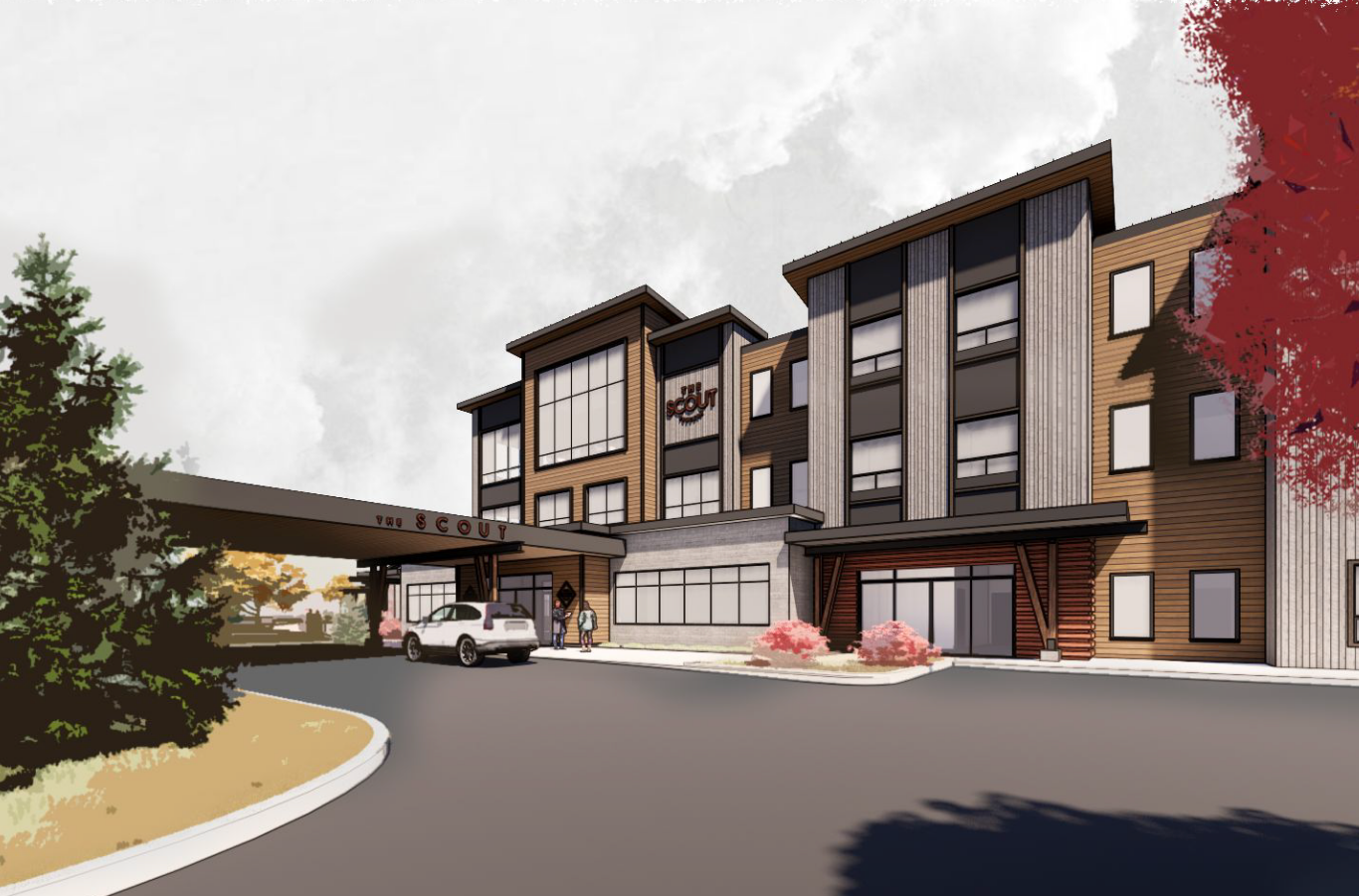
Hotel-To-Multifamily Conversions: A Viable Option?
By Malcolm Davies, Founder & Sr. Managing Partner, WAY Capital I Published in Hotel Executive December 18, 2022
Hotels, like most real estate, are about location, location, location. But another real estate catchphrase applies, too: highest and best use.
The pandemic, stacked on top of a decade of robust and sometimes overeager hotel development, has some property owners considering whether multifamily apartments might be a higher and better use for their hotel or motel real estate. While it makes for splashy headlines, hotel-to-multifamily conversions aren’t wildly popular, partly because particular conditions must exist to execute a successful conversion. It’s a big decision that should be made carefully after considering several factors: the existing product, the conversion elements, the market dynamics and the financing.
The Existing Product
A pre-pandemic surge of hotel development is reducing patronage for some of those built in the 1960s and 1970s. Conditions were even worse for those older properties teetering on functional obsolescence when the pandemic hit. Some owners are finding they can’t afford to wait for occupancy levels to return to pre-pandemic days or that they no longer have a budget for the upgrades necessary to keep customers coming through the doors. In these instances, a conversion to multi-family use may be appropriate. If those older hotels and motels were built in urban areas and close to amenities, as many were, prospects for conversion to multifamily would be stronger. The small units that result from hotel-to-multifamily conversions appeal most to those on a tight budget – often young adults or senior citizens who value living in walking distance from restaurants and shops and as a way to compensate for smaller living quarters. These outdated lodging properties often have another point in their favor: on-site amenities that appeal to multifamily residents, such as pools, lobbies, parking, and common areas. A large business room can easily convert into a residents· co-working space. Extended-stay properties generally have a leg-up regarding multifamily conversion for a few reasons. First, they won’t require extensive mechanical, electrical and plumbing changes. Second, they often have kitchenettes that can easily be augmented to serve as proper, albeit small, kitchens. The third reason is that extended stay properties, especially older ones, don’t usually have as much ample ballroom space that would need to be repurposed. Doing so could quickly become cost prohibitive. Adaptive reuse can quickly go over budget, so owners and developers must know what the renovation will entail. It’s essential to have an experienced team for all phases, starting with feasibility and lasting through construction and management.
The Conversion Elements
Owners may worry that lodging rooms are too small to market as apartments, but the lack of affordable housing in the U.S. has made micro-unit living much more popular and accepted. Micro apartments generally run between 100 and 500 square feet. Renters are willing to do with less when it comes to apartment space if it comes at a price they can afford, especially if multiple amenities are available onsite and nearby. Zoning may also be a hurdle. The local jurisdiction may not allow residential uses in the zone where the existing lodging property sits. If the owner determines this is the case, the lack of affordable housing in the U.S. may sway the jurisdiction to grant a conditional use permit or rezone the area, but this can cost the property owner time and money. Parking also needs to be studied-both the existing parking layout and parking requirements for a multifamily property. For instance, is the existing parking capacity adequate for a multifamily property? Is the ingress and egress and layout of the parking area appropriate? What happens to the valet area if there is one? Is it razed and relandscaped, converted to a ride-share area, or something else?
If the property is near transit lines, the jurisdiction may require less or even no parking, but the owner also needs to consider how the availability of parking, or lack thereof, will affect the lease-up rate.
Another vital element of the conversion process is the property management. Since the micro-unit multifamily project will probably appeal most to young adults or senior citizens, the owner needs to identify and secure a property manager with such experience. While this seems like something that can wait, it’s critical to know that an appropriate property management company will be available. Also, it might make a big difference to have that company committed before appealing to capital market sources for funding the conversion project. This step will be paramount for converting a lodging property to a senior living property, as management needs to be specialized in this case.
The Market Dynamics
To invoke one more real estate catchphrase, all real estate is local. Even though appetites for micro units are growing, such small accommodations may not be appropriate for every market. Thorough market-specific research is a must when considering a hotel-tomultifamily conversion.
That said, the demand for workforce housing is strong in most major markets, and micro units are one component of workforce housing supply.
Workforce housing targets households earning between 60% and 120% of the area median income. As determined by the Population Reference Bureau(PRB), in 2020, at least half of all renting households in 15 different states spent at least 30% of their income on housing. A popular standard rule for budgeting rent is not exceeding 30% of the renter’s income. The need for more affordable housing in those 15 states is obvious. These dynamics help support the case for hotel-to-multifamily conversions and possibly any conditional use permit exceptions required to produce such housing. As part of the decision-making process, the owner should also consider whether the local jurisdiction will be reluctant to lose any transit occupancy tax from the existing lodging property. While this tax revenue stream may make a conditional use permit more challenging to obtain, knowing the dynamics at work can help the property owner proactively strengthen the case for conversion by addressing blight or showing how the conversion could catalyze additional development or increase the customer base for surrounding businesses.
Financing
When hotel-to-multifamily conversions gained momentum as a viable idea over the last few years, securing financing was challenging. Most lenders needed to gain experience participating in this type of project. Add in the low-dollar rents per unit, and property owners struggled to make their case for financing. However, lenders now understand that a high-price-per-square -foot-rent rate offsets the low-dollar rent. This dichotomy means a $3-per-square-foot rent market becomes a $5.50-per-square-foot rent market for a community of smaller units. Construction lenders, bridge lenders, and even permanent lenders became more amenable to the idea. They know attainable housing is in high demand, and they can underwrite the cashflows and absorption. Since many of these conversion opportunities are of assets that have become functionally obsolete as hotels, the acquisition costs are significantly below replacement costs. This provides for an excellent basis as long as the sponsor has thoroughly underwritten their capex conversion costs.
Equity capital is abundant in this space as we enter a new phase of the real estate cycle. Buying existing assets, mitigating costs and focusing on high-demand markets can generate a healthy yield even in a high-interest rate environment. Debt capital, depending on leverage and lender profile, be that bank, life company, or debt funds, are all available. If an owner is willing to increase their equity investment, banks at lower leverage (50-60% L TC) are an attractive option due to their low-cost nature. Since the opportunity here is one in which we are making a significant asset change, an applicant might consider leverage north of 75% L TC as long as their budget and confidence in the takeout permanent financing supports it. Even the higher costs of these financing facilities are feasible since the basis is extremely attractive, allowing for a higher level of interest reserve. Lenders and other capital providers will want to see a proven team as part of the redevelopment package. These conversions require specialized expertise, and units can’t be leased up to create cash flow until the project is complete. This means lenders must believe in the team’s ability to execute a tight development timeline and a strong lease-up strategy.
A capital markets advisor experienced with hotel-to-multifamily conversions can help the owner construct a compelling presentation, connect the owner with proven lenders and investors, and help execute the financing deal.
Case Studies
Through WAY Capital’s work securing equity and debt financing for hotel-to-multifamily developers, where we have closed numerous transactions this year with a total capitalization of over $300 million, we know the space intimately. We can share examples of recent hotel to multifamily conversion projects.
A Houston, Texas Four Points by Sheraton hotel is transforming into a micro-unit rental property. Initially a 216-key hotel located in the Upper Kirby neighborhood of Houston, the owner is converting the hotel into a 220-micro-unit rental community. Due to the strength of the Houston multifamily market and the track record of the ownership and development team, our firm was able to put together a $26.3 million full-capital-stack financing for the project, which can be challenging without solid fundamentals.
For the conversion of a limited-service hotel in downtown Sacramento, California, WAY procured joint-venture equity financing for conversion into a 131-unit multifamily asset.
WAY also procured a $33.2 million adaptive reuse construction loan for the conversion of a high-rise hotel tower to 184 units in downtown Salt Lake City, Utah. For the conversion of a 496-key hotel to a market-rate multifamily complex in Southeast Colorado Springs we were able to arrange a $42.5 million construction loan. The financing capitalized the hotel acquisition, renovation, and targeted deferred maintenance. The amenity-rich property is one of the largest hotel-to-multifamily conversions in the U.S. and one of the first and few in the Colorado Springs submarket.
Every property will have unique circumstances, but those well positioned for a hotel to multifamily conversion may find an extended life and better cash-flow potential. With the right team in place, hotel to multifamily conversion may be a welcome solution for owners of functionally obsolete lodging properties.


